Bollinger RD 2008 Champagne: One of the Greatest Wines from a Sensational Vintage
by Ken Gargett
Another 2008 champagne, you say. Indeed. We have focused more on this great year for the world’s finest sparkling wine than any before it or since, for good reason. As mentioned previously, it is for me, the most stellar champagne vintage since 1988. So good in fact, that we have even featured this wine before. Sort of. Allow me to explain.
Bollinger releases a vintage as their Grand Année and then, assuming it to be of the style that works and of sufficient quality, again later as their RD.
In the years to come, champagne lovers will no doubt debate the question of just which 2008 champagne takes the gold. I have no doubt that both the Bollinger 2008, and also the Bollinger RD 2008, will be in the discussion.
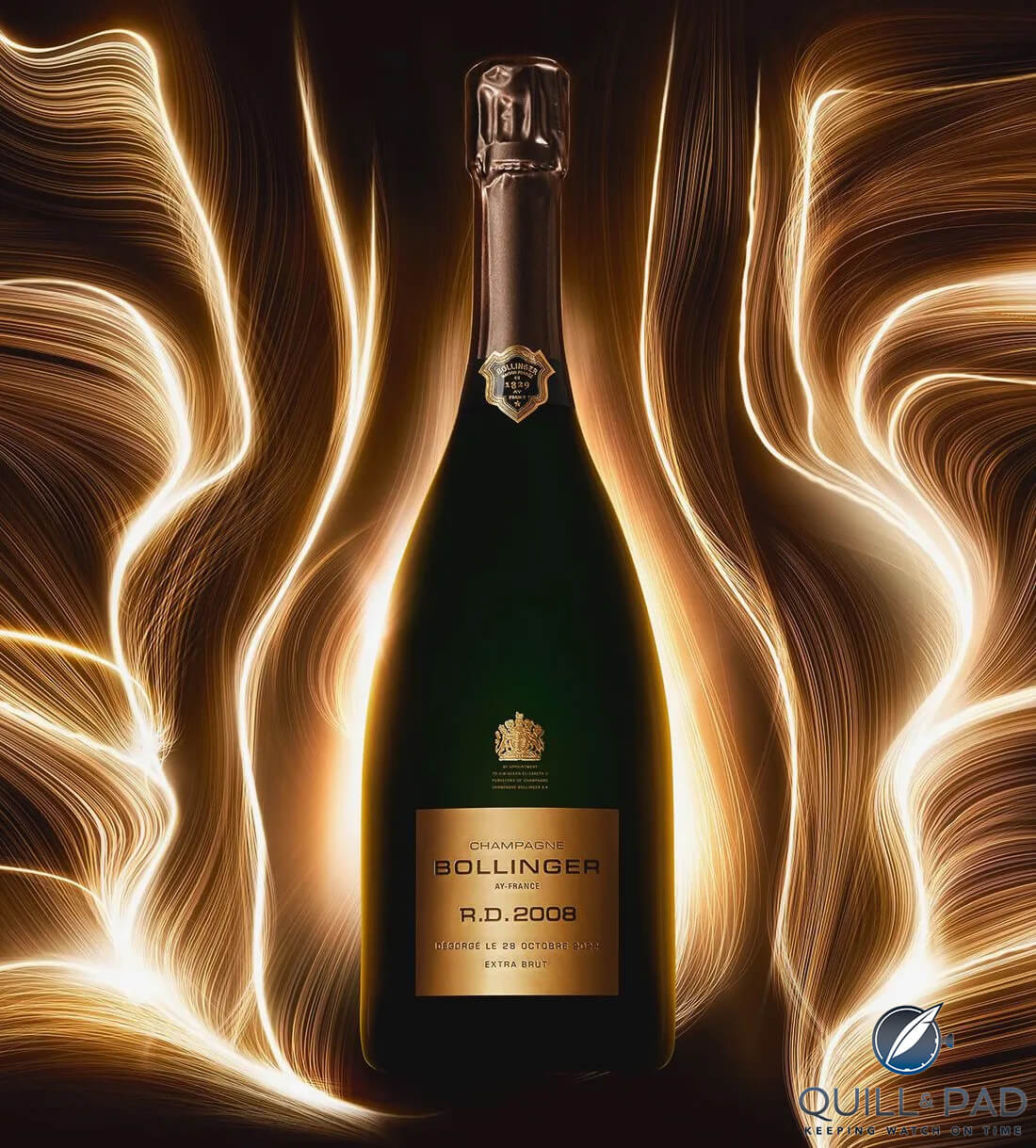
Bollinger RD 2008 champagne
Even though we have looked at RD champagnes previously, it is worth detailing the concept of RD.
It began many years ago when houses began including a prestige champagne in their core range. Moet et Chandon had Dom Perignon, Louis Roederer had Cristal, Taittinger with Comtes de Champagne and so on. Madame Bollinger was regularly asked what she planned to do. The answer was simple. Nothing at all.
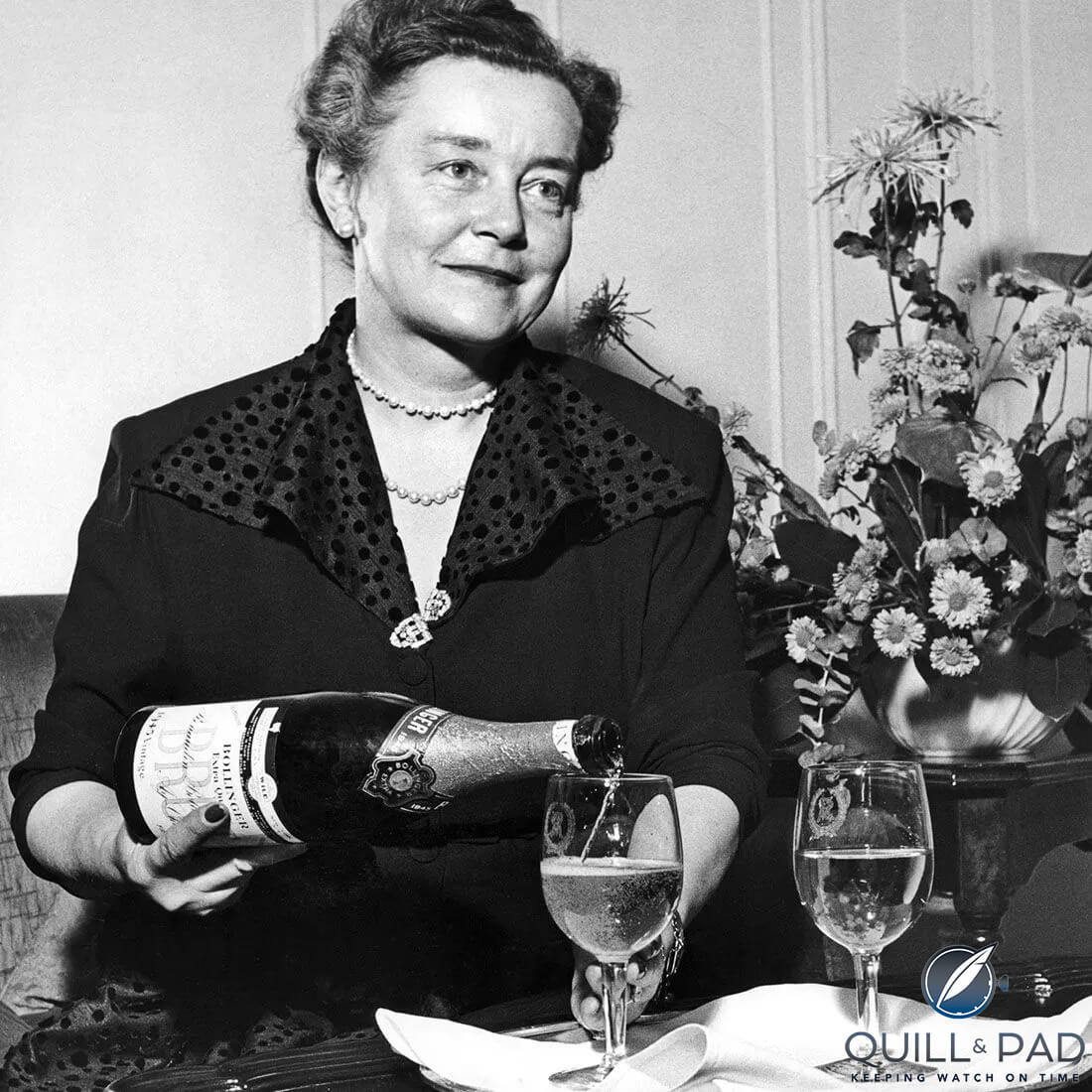
Madame Bollinger
The reason was that Madame Bollinger had always stated that the champagnes they made were as good as they could be. She maintained it would not be possible to make a prestige cuvee for the house because they were already offering their best. So how could they do better? In addition, if they were to attempt to do so, it would mean depriving their existing champagnes of crucial quality material.
Apparently it was Madame Bollinger herself who came up with the answer. This involved leaving their Grand Année (their vintage champagne) on its lees for an extended period of time to take advantage of what they conveys. This means that the disgorgement of those bottles happens many years beyond what is usual.
Of course, like so much else that happens in Champagne, nothing happens quickly.
The decision to do this was made with the 1947 vintage, however it was not until 1963 that those bottles hit the market, though it was a tiny release to their American agent. It must have been well received as the program was put into full swing thereafter. In 1967, the house released three vintages of this cuvee – the 1952 in England, the 1953 in Switzerland and France, and the 1955 in the United States and Italy. These were followed by the 1959, a famous vintage, and the wine’s reputation was well on the way to being firmly established.
Needless to say, it was not that simple. They had to find a name and many were considered before they settled on ‘RD’. This worked well as in French, it represents ‘récemment dégorgé’ and in English, ‘recently disgorged’. There was also the question of dosage. This was an era when dosage levels were well above what we see today (a generalization, of course).
The extra time on lees, however, removes the need for much dosage at all Bollinger settled at 3 grams/liter, which is still the standard for today. The Grand Année 2008 saw 8 grams/liter dosage and the 2008 RD, the three grams. 100% malolactic fermentation.
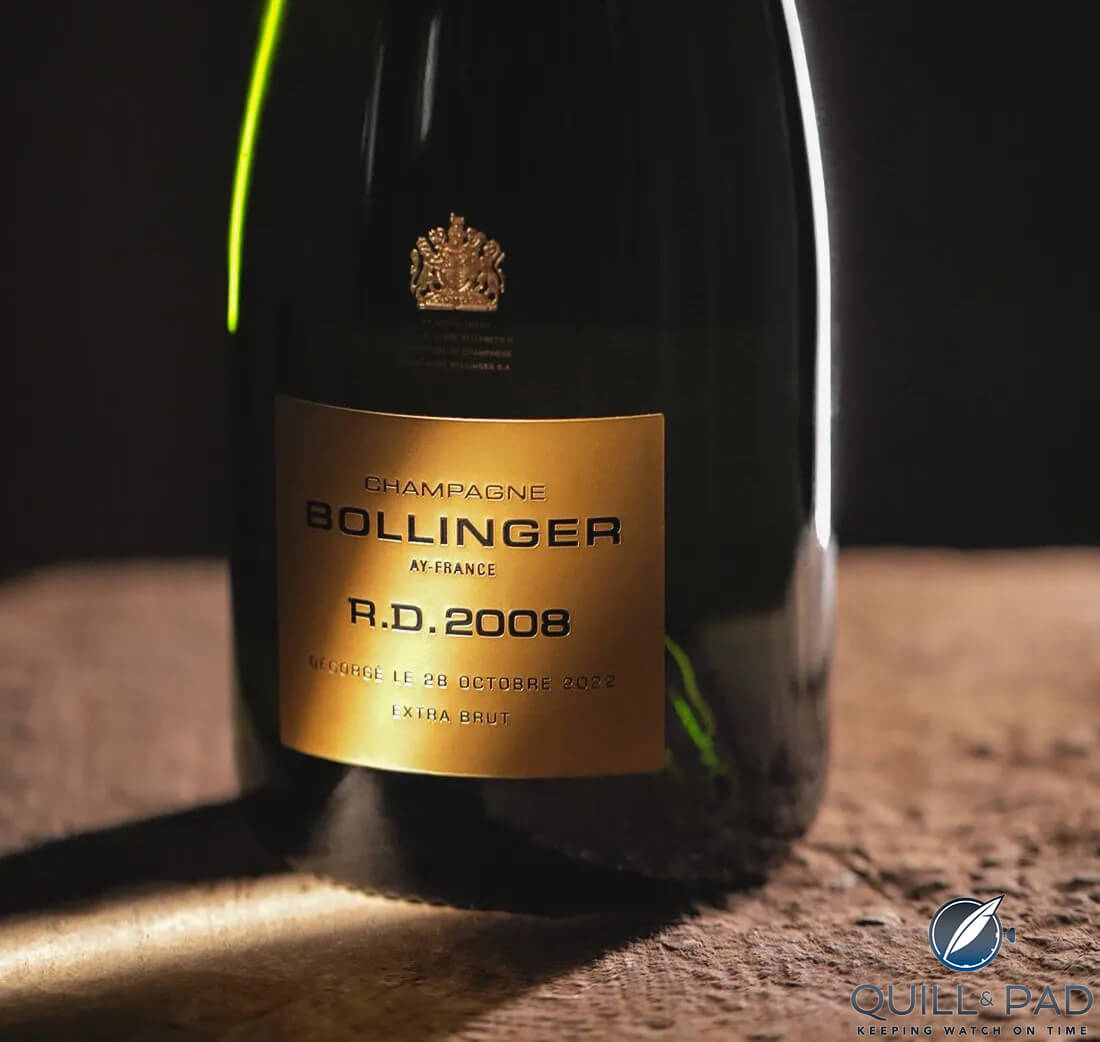
Bollinger RD 2008 champagne
As with all wines which spend a very long time on lees, the pressure is slightly reduced. The usual pressure in a bottle of champagne sits around 6 atmospheres, similar to that of a London bus tire. By the time the RD is disgorged, it has receded to around 4.5 to 5 atmospheres.
One thing to note. This extended period on lees can result in minor bottle variation. Any wine under cork is likely to be subject to that, and the longer it is under cork at any stage of its life – pre and post release – the more the likelihood. I well remember one English critic writing about how they loved the idea that their case of old Haut Brion was likely to vary a little, bottle to bottle.
Personally, I can’t imagine the winemaker happy to see their wines at anything but their best (without wishing to revive the old closure debate, this is one of the reasons so many Australian and New Zealand winemakers moved to screwcap). I mention the variation for reasons which will become apparent.
These days, vintages of RD may undergo a series of disgorgements, rather than all at once. This will also mean very minor variations in the final wine, but nothing dramatic. For example, we have the first release of the 2008 RD hitting shelves around the world.
There will be a further disgorgement later this year for shipping in 2024 and a final one in 2024 for shipping in 2025. If that conveys the impression that this means there will be plenty available, forget it. If you get the chance, grab it now. This is a tiny release and each tranche will barely create a ripple.
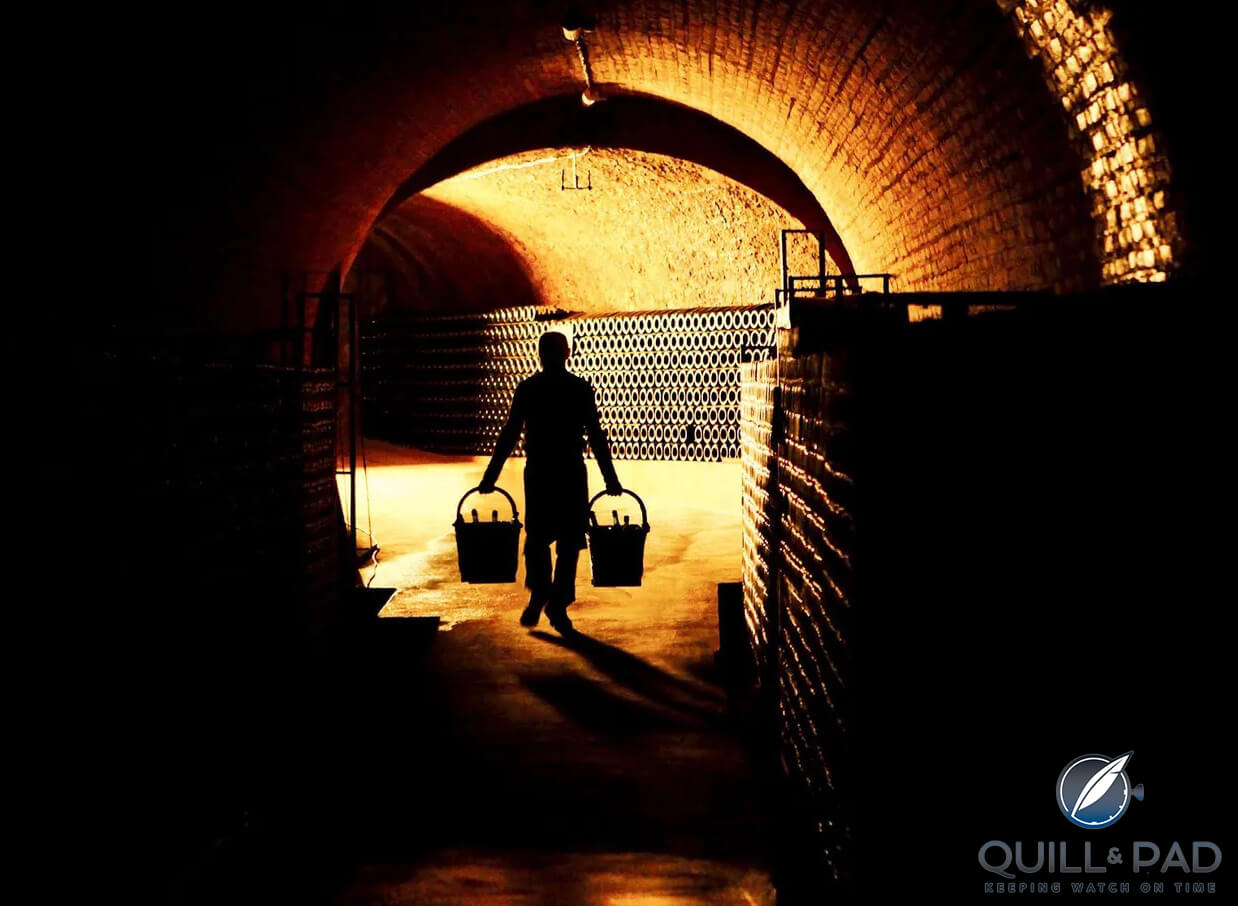
Bollinger cellar in Champagne
Despite its relatively high profile, it is worth remembering that Bollinger is a small champagne house. Grand Année is only a small percentage of its production and RD forms only 10-15% of that (we were told at the release of the Grand Année 2008 some years ago, that Bollinger planned to hold back more of that vintage than any other for RD – that still does not amount to much).
To put all this in perspective, Bollinger produces less than one percent of the region’s champagne, and RD is less than 1% of Bollinger’s entire production (on average, 30,000 bottles, but remember that often this must be spread across three or four years).
Keep in mind, the next RD which will be released will be 2012 (this will need to be confirmed in the years to come, but as there were no vintage releases by Bollinger from 2009 to 2011, and 2012 was another spectacular vintage, it seems a no-brainer). So if you want to enjoy RD over the next few years, don’t hesitate.
The price is largely commensurate with other great prestige cuvees at around A$500 to A$600 (yes, sadly we find that champagne is fast following the stratospheric rises we have seen with Burgundy).
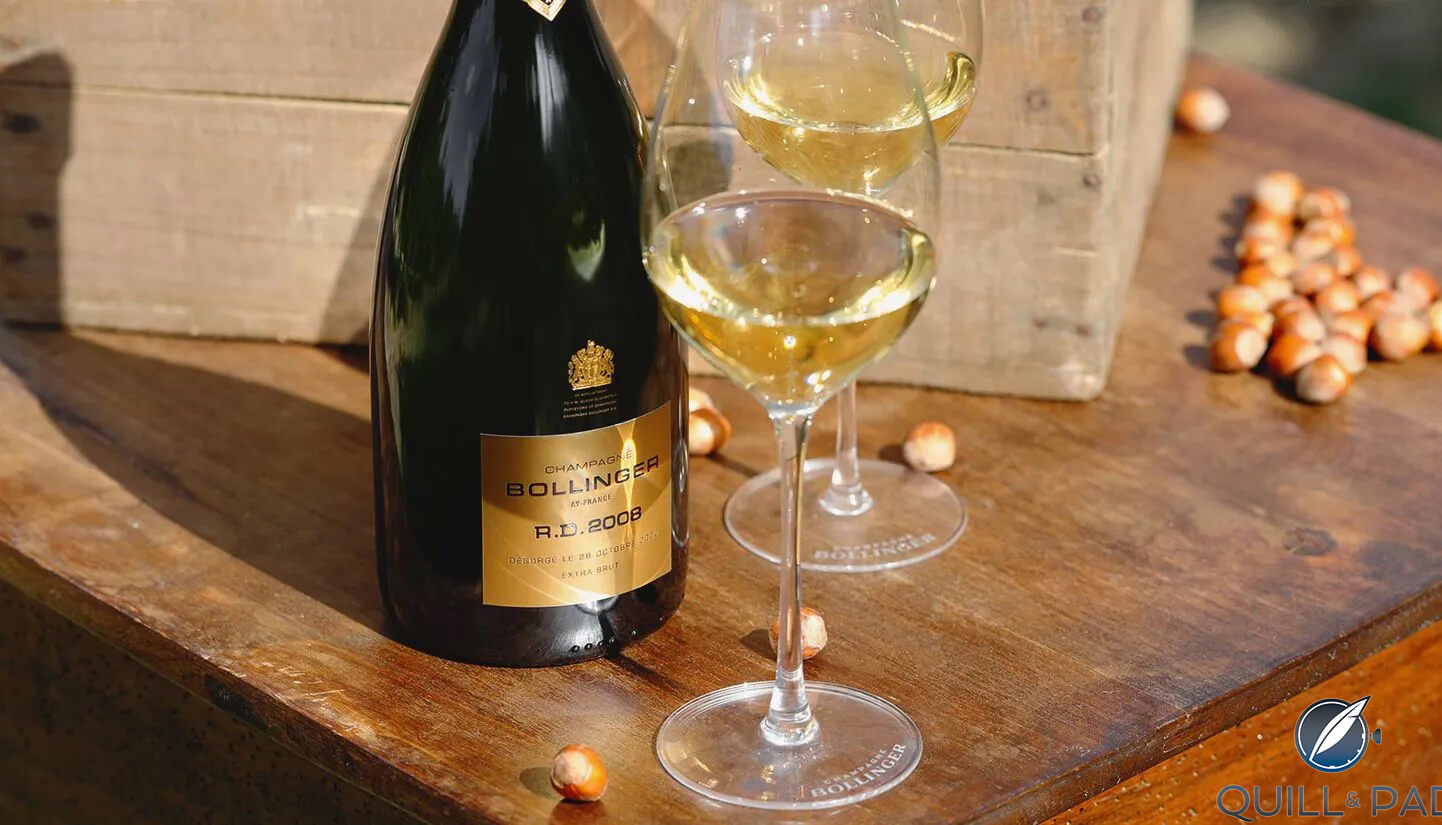
Bollinger RD 2008 champagne
England is by far Bollinger’s most important market with 30% of production exported there. The domestic market in France is next with 10%, followed by Australia, the United States, and then Italy, but overall, they service well over 100 countries.
RD usually has at least twice the time on lees as the Grand Année, give or take. The 2008 RD has 14 years on lees, an extraordinary length of time. It is rare, though not unknown, for a Grand Année to be considered unsuited for RD status. 2005 was one example. Equally, it is almost unheard of for a vintage to be RD-worthy but not have been released as a Grand Année. 1981 is the only one of which I can think.
As mentioned, 2008 was a glorious vintage. Guy de Rivoire, International Sales Director for Bollinger, was back in town recently to release the new RD. He compared the style of the vintage to 1976, 1986 and 2002 (of those, 1976 has certainly proved its longevity, though I always preferred the 1975s; 1986 ended up a fair vintage though perhaps never lived up to original expectations; while 2002 is one of the greats). It was a year with no frosts, no rain at inopportune moments, no hail, and at that stage, none of the effects we are now seeing with global warming.
The wine itself is a blend of 71% Pinot Noir and 29% Chardonnay (there is always at least 60% Pinot Noir, but 71% is quite high). The Pinot, all from Grand Cru vineyards, hails mostly from Ay, vineyards which face the south, and Verzenay, where they face northeast, a much cooler prospect. There is some Verzy and Ambonnay as well. The Chardonnay, almost all Grand Cru, is mostly Le Mesnil-sur-Oger and Cramant. In total, 91% of the wine is from Grand Cru vineyards.
There are 18 different wines included in the final blend (which makes one realize what an incredible bargain their Special Cuvee – their NV or more correctly, Multi-Vintage – is, with more than 300 wines in the final blend). Even 18 is more than usual for the Grand Année/RD, with 13 to 16 being more common.
For me, the RD 2008 is a deep golden bronze color. The immediate impression was two things. First, an impressive array of nutty notes. Hazelnuts certainly, but also walnuts and a touch of almond. Indeed, Bollinger always links something to their wines – with the 2007, it was saffron; with 2008 it is hazelnuts from Piedmont. I can’t speak to the specifics of Piedmontese hazelnuts, but assuming that they do not vary too much from those with which I am familiar, I could not agree more.
The second impression was that, while a glorious wine, the character is more Bollinger (the DNA of the house, if you like) than 2008. This is a wine of complexity, power, class, richness, harmony, persistence and more – all hallmarks of great Bollinger champagnes.
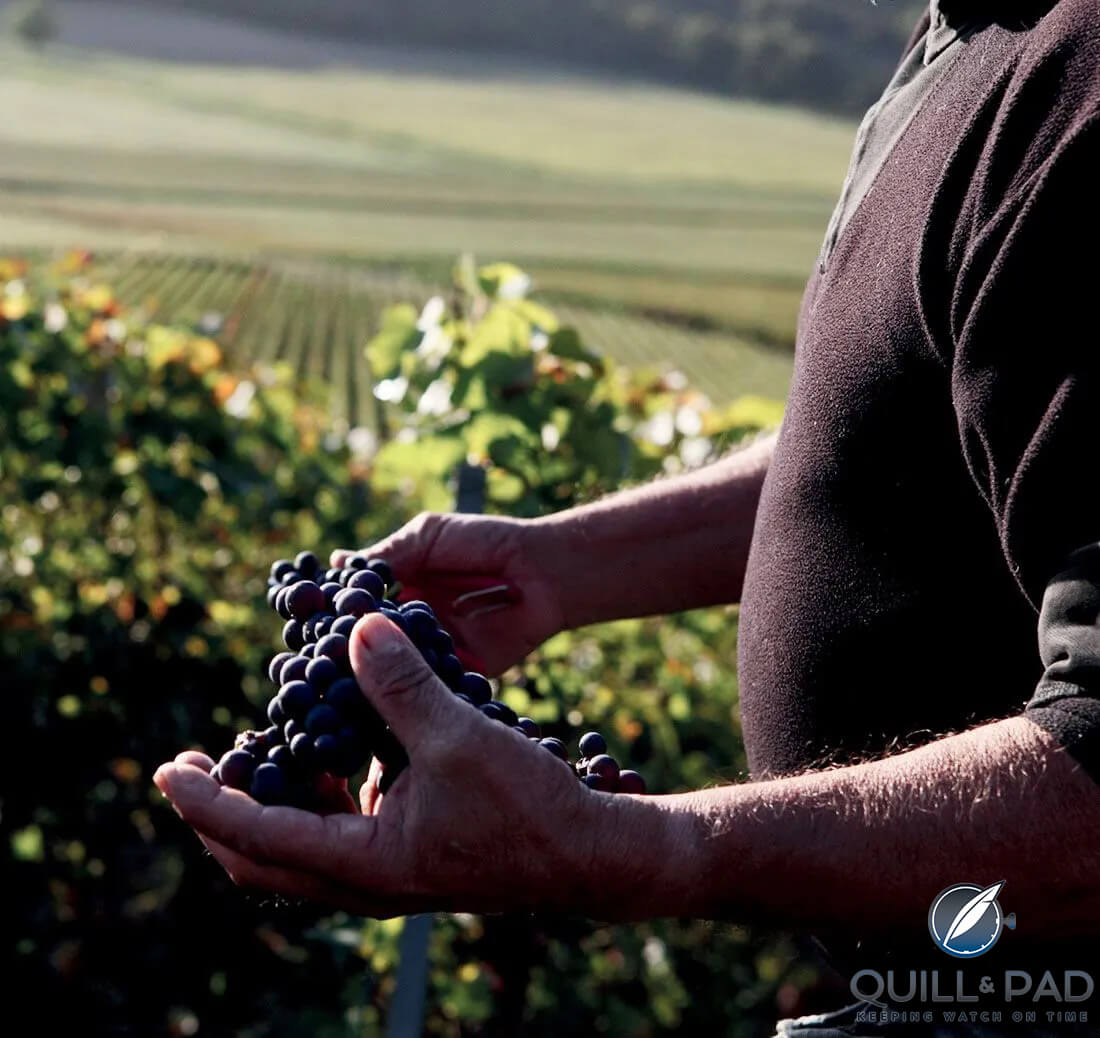
Bollinger Pinot Noir grapes
The Pinot Noir – and Bollinger is nothing if not a Pinot Noir house – is very much to the fore. I would like to think that I would have had little difficulty in identifying the wine as a Bollinger if served blind, but I doubt I would have picked 2008.
If it were another time, the richness and power for me, was reminiscent of 1985. Others dispute this and have talked 1979 (I always loved 1985 more than 1979, though both great years, so I wonder if that plays a role? It would also be fair to say that I am in the minority here with more references to ’79 than ’85, if one scours the internet reviews). If not 1985 or 1979, perhaps a more refined 1996? Of course, this brings us back to minor bottle variations. Did our bottles give varying experiences? We’ll never know. Whatever year the 2008 reminds one of, it is a fabulous wine.
Stonefruit, tobacco leaves, brioche and those endless hazelnuts. Hints of acacia florals and ginger. A wonderful intense creamy texture and great length. This is a wine with focus and intensity with the palate offering more apricot kernels, hints of toast and those nuts. Fine acidity and traces of salinity run the length, and this is a very long wine indeed. As an ’08, there is little doubt it will continue to age and improve, but for how long? I think well cellared bottles will enjoy at least another ten to twenty years.
If I look back at our notes for the Grand Année 2008, it very much reflected the glorious 2008 vintage. “A real chalk note comes through on the nose with minerally backing. Limes and a fresh saline, almost oystershell note. On the palate, the flavors move more to hints of stonefruit, grapefruit and the merest whiff of vanilla bean. Fresh as is imaginable, it offers the bright, vibrant acidity of the 2008 vintage. There is great depth, complexity, length and balance, with a seductive texture. Fuller than many, as one expects from Bolly, but the balance never wavers.” It shows just how much time on lees can bring about changes in a wine.
The question is often asked. Is a champagne that spent extended time on lees better than the same wine which did not? For me, the answer is different, not necessarily better. That said, if I ever get the chance to sit down with a bottle of the 2008 Grand Année and the 2008 RD, I’ll let you know.
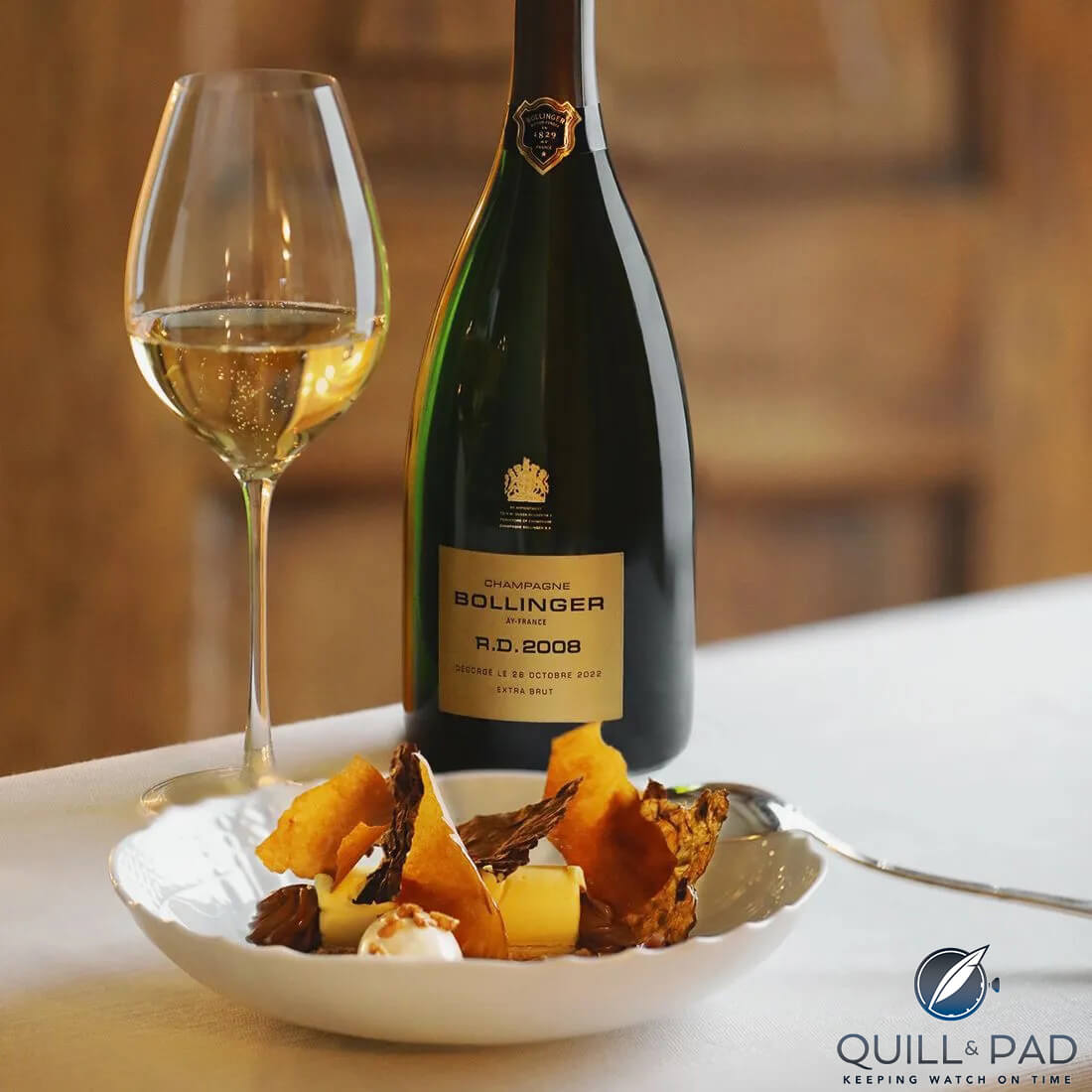
Bollinger RD 2008 champagne
At the time of the release of the 2008 Grand Année, also with Guy de Rivoire, he and I discussed that question of house vs vintage. Guy noted, of the 2008 Grand Année, that “you could just start to see the Bollinger character coming through”, something with which I agreed. At the time, I said that normally “you would expect even vintage Bollingers to be exhibiting much more of the House style as well as the vintage, at this stage. While hardly a fault, that is not really happening yet, though no doubt it will.” For me, it most certainly has happened, even more than I could have predicted.
Bolly first, 2008 second, but whatever one thinks, a cracking champagne that deserves to be in every champagne lover’s cellar. 98.
We would be remiss if we did not pay tribute to Bollinger’s recent chef de cave for a decade, Gilles Descôtes, who so sadly passed away late in 2022. Gilles was responsible for this wine and many more wonderful champagnes. During his tenure, he worked on improving the purity and precision of the Bollinger champagnes and there is a good argument that they have never been better. He is succeeded by Denis Bunner, with whom he worked for many years. Gilles will be greatly missed and with this wine, he has left us with an extraordinary legacy.
For more information, please visit www.champagne-bollinger.com/en/wine/bollinger-rd-2008/
You might also enjoy:
How Long Can We Age Champagne, Should We Age Champagne, And Is Late Disgorged Or Aged On Cork Best?
Bollinger 2008 La Grande Année Champagne: Still Young, But Already A Classic
Taittinger Comtes De Champagne Blanc Des Blancs 2008: James Bond Will Like It



Leave a Reply
Want to join the discussion?Feel free to contribute!